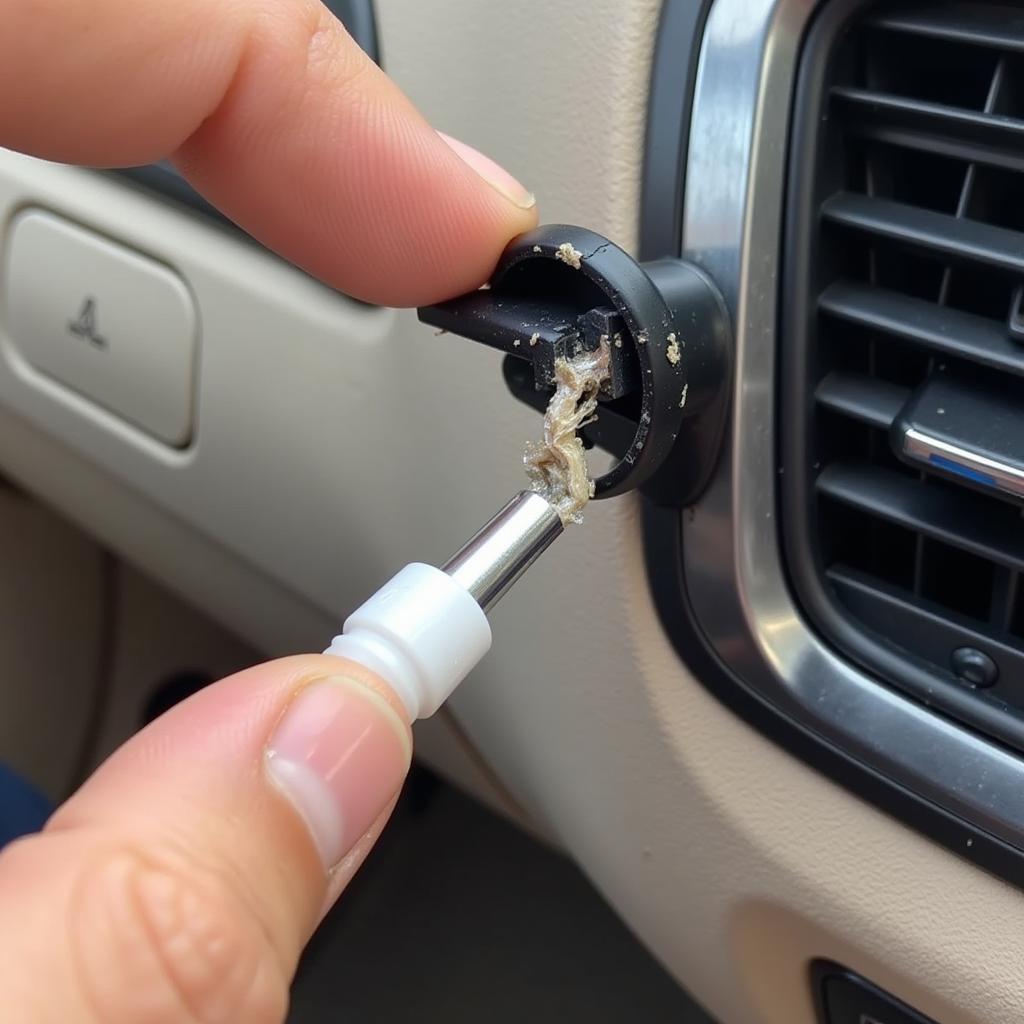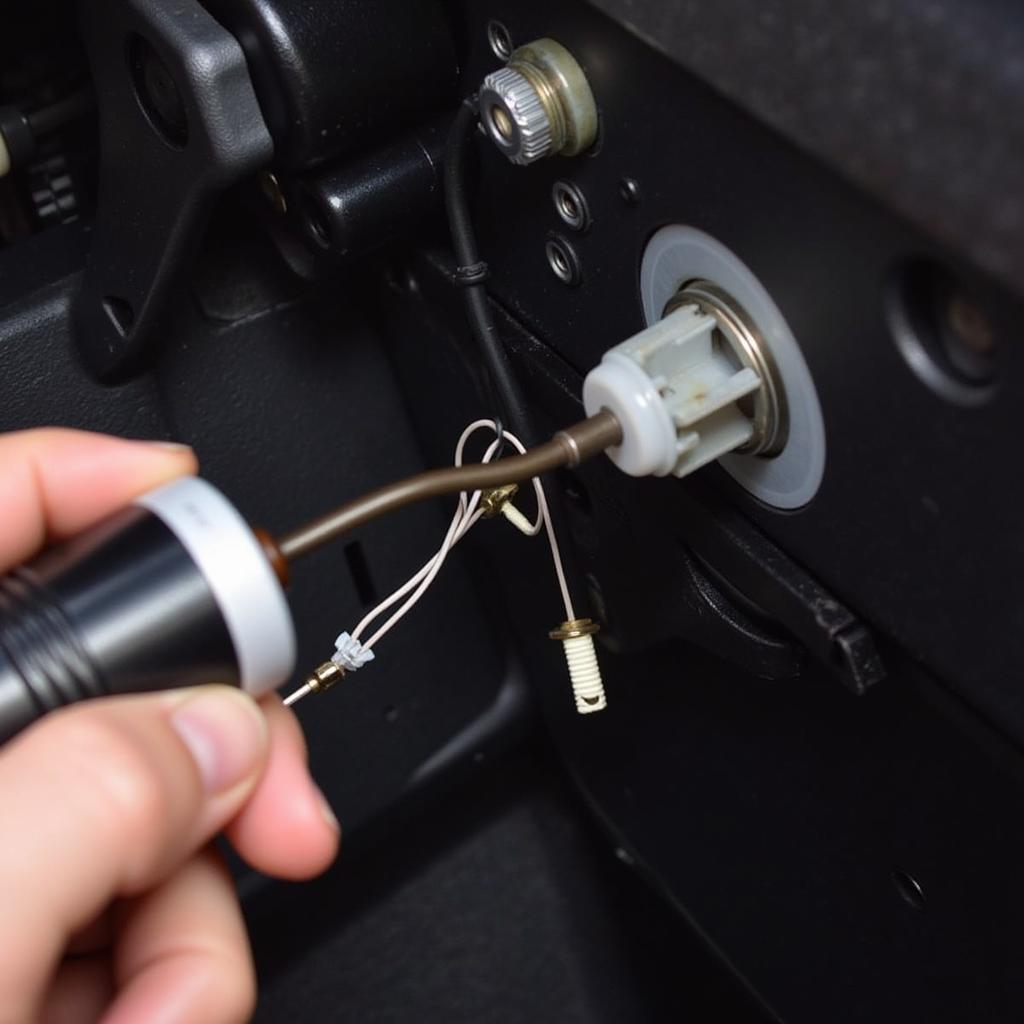Fixing a flat tire is a frustrating but common experience. Luckily, with the right tools and a little know-how, you can fix a car puncture at home and save yourself the hassle of calling a tow truck or paying for expensive roadside assistance. This guide will walk you through the steps, offering tips and tricks to make the process as smooth as possible.
Fixing a puncture at home requires preparation and careful execution. First, ensure you have the necessary tools, including a jack, wrench, spare tire, and tire iron. Safety is paramount when working on your vehicle, so choose a level surface away from traffic. Once you’ve gathered your supplies, you can begin the process of fixing your car puncture. Now, let’s delve into the specific steps.
How to Safely Jack Up Your Car
Before you begin working on the flat tire, ensure your car is parked on a level surface and the parking brake is engaged. Locate the designated jacking points for your vehicle (consult your owner’s manual if unsure). Position the jack securely under the jacking point nearest to the flat tire. Slowly raise the vehicle until the flat tire is completely off the ground.
Removing the Flat Tire
Once the car is safely jacked up, you can start removing the lug nuts. Using the lug wrench, loosen the lug nuts by turning them counterclockwise. Don’t remove them completely yet, just loosen them enough to easily remove once the tire is off the ground. Then, carefully remove the flat tire and place it aside. Make a mental note of how the tire was oriented on the hub, as this will help when installing the spare.
What should I do after removing the flat tire? Replace it with the spare, of course! But before you do, inspect the hub for any debris or damage. A clean hub ensures a snug fit for the spare tire.
Installing the Spare Tire
Carefully align the spare tire with the wheel studs. Once aligned, push the spare onto the studs until it’s flush against the hub. Then, hand-tighten the lug nuts in a star pattern to ensure even pressure. Once hand-tightened, lower the vehicle until the spare tire just touches the ground. This provides stability while you fully tighten the lug nuts with the wrench. Then lower the vehicle completely.
Remember, a spare tire is often a temporary fix. It’s crucial to have the punctured tire repaired or replaced by a professional as soon as possible. You can often find reliable services for fixing things like a tear in car upholstery or even car seat leather fix online, offering convenience and expert solutions. Looking for solutions for car panel damage? Check out how to fix car panel damage.
Checking the Tire Pressure and Final Steps
After installing the spare, check the tire pressure and inflate it to the recommended pressure listed in your owner’s manual or on a sticker inside the driver’s side doorjamb. Don’t forget to properly dispose of your flat tire. Many tire shops offer recycling or disposal services. Finally, remember that a spare tire often has speed limitations. Consult your owner’s manual for these limitations and drive cautiously.
“Many drivers underestimate the importance of regularly checking their tire pressure. Proper inflation not only ensures safe handling but also extends the life of your tires.” – John Smith, Automotive Engineer
Need to fix your fire extinguisher in your car? We have you covered with this guide: how to fix fire extinguisher in car.
Looking for a reliable car fixing service in the Chicago area? Check out this helpful resource: chicago are for car fixing.
Conclusion
Fixing a car puncture at home can seem daunting, but by following these steps and taking necessary safety precautions, you can fix your flat tire and get back on the road. While fixing a puncture yourself can be a money-saver, remember that it’s a temporary solution. Always have a professional inspect and repair or replace the damaged tire as soon as possible. For more helpful tips and guides, visit us at AutoTipPro, 500 N St Mary’s St, San Antonio, TX 78205, United States or call us at +1 (641) 206-8880. You can also find helpful guides on how to fix a tear in car upholstery: how to fix tear in car upholstery. Or, perhaps you need information on a car seat leather fix.
FAQ
- Can I fix any type of puncture at home? No, some punctures, like those caused by large objects or sidewall damage, are beyond DIY repair and require professional attention.
- How long can I drive on a spare tire? Spare tires are typically designed for temporary use, usually limited to a distance of 50-70 miles and a maximum speed of 50 mph. Check your owner’s manual for specific recommendations.
- What if I can’t loosen the lug nuts? Using a penetrating oil can help loosen stubborn lug nuts. If they still won’t budge, it’s best to call for roadside assistance.
- Do I need to replace the tire after a puncture? Not always. Small punctures can often be repaired by a professional.
- What are the signs of a flat tire? Common signs include a pulling sensation, a flapping sound, or a noticeable loss of tire pressure.
- What should I do if I get a flat tire while driving? Slowly pull over to a safe location away from traffic, turn on your hazard lights, and engage the parking brake before attempting to change the tire.
- Where can I find the recommended tire pressure for my car? The recommended tire pressure is usually listed in your owner’s manual or on a sticker inside the driver’s side doorjamb.






Leave a Reply